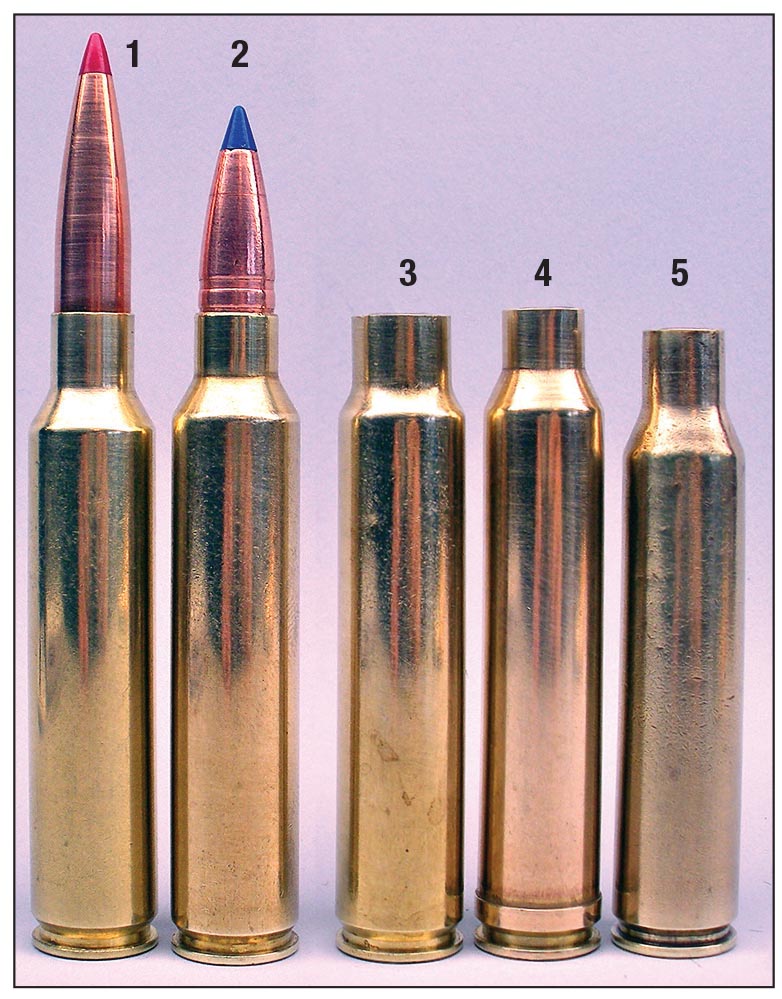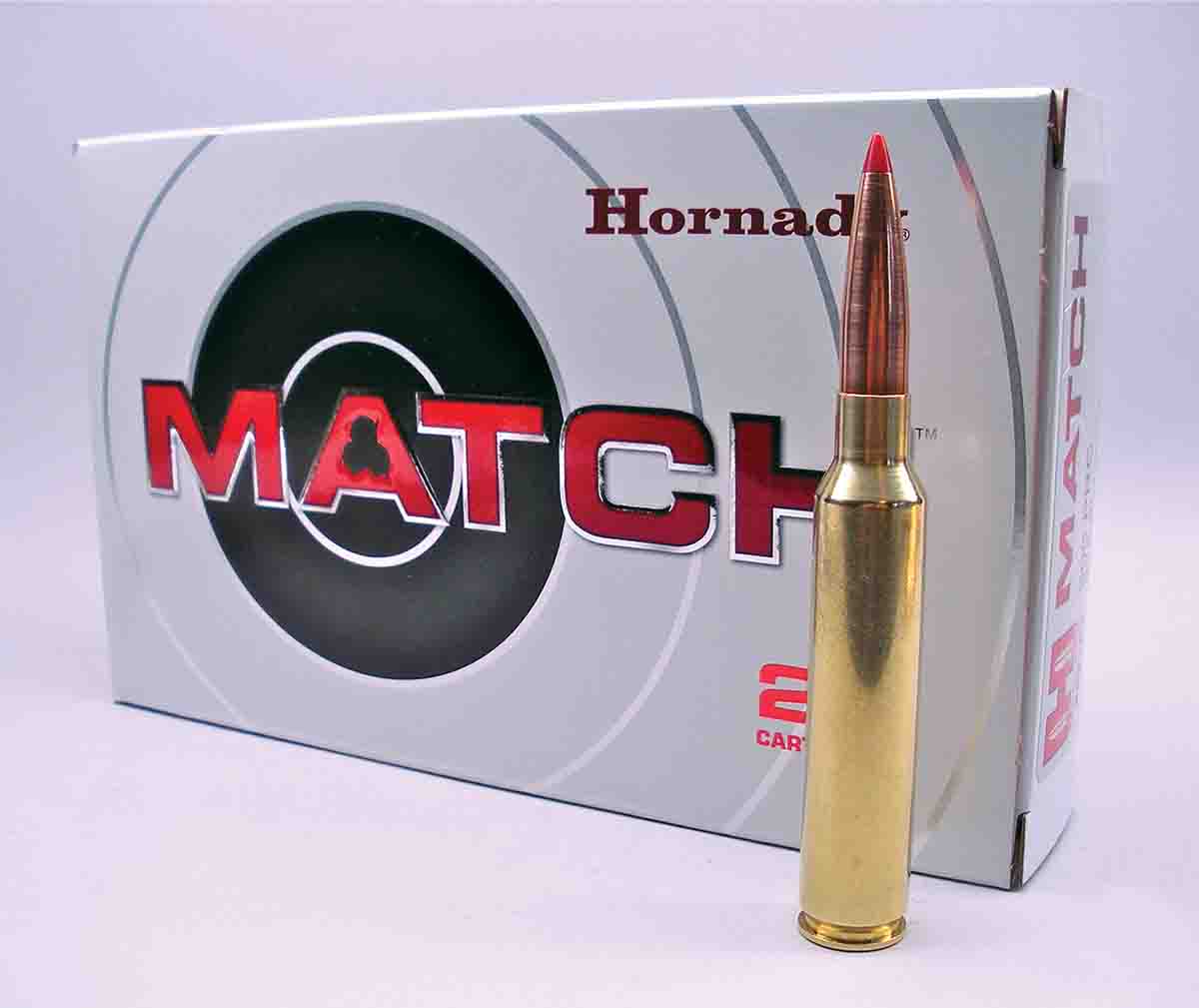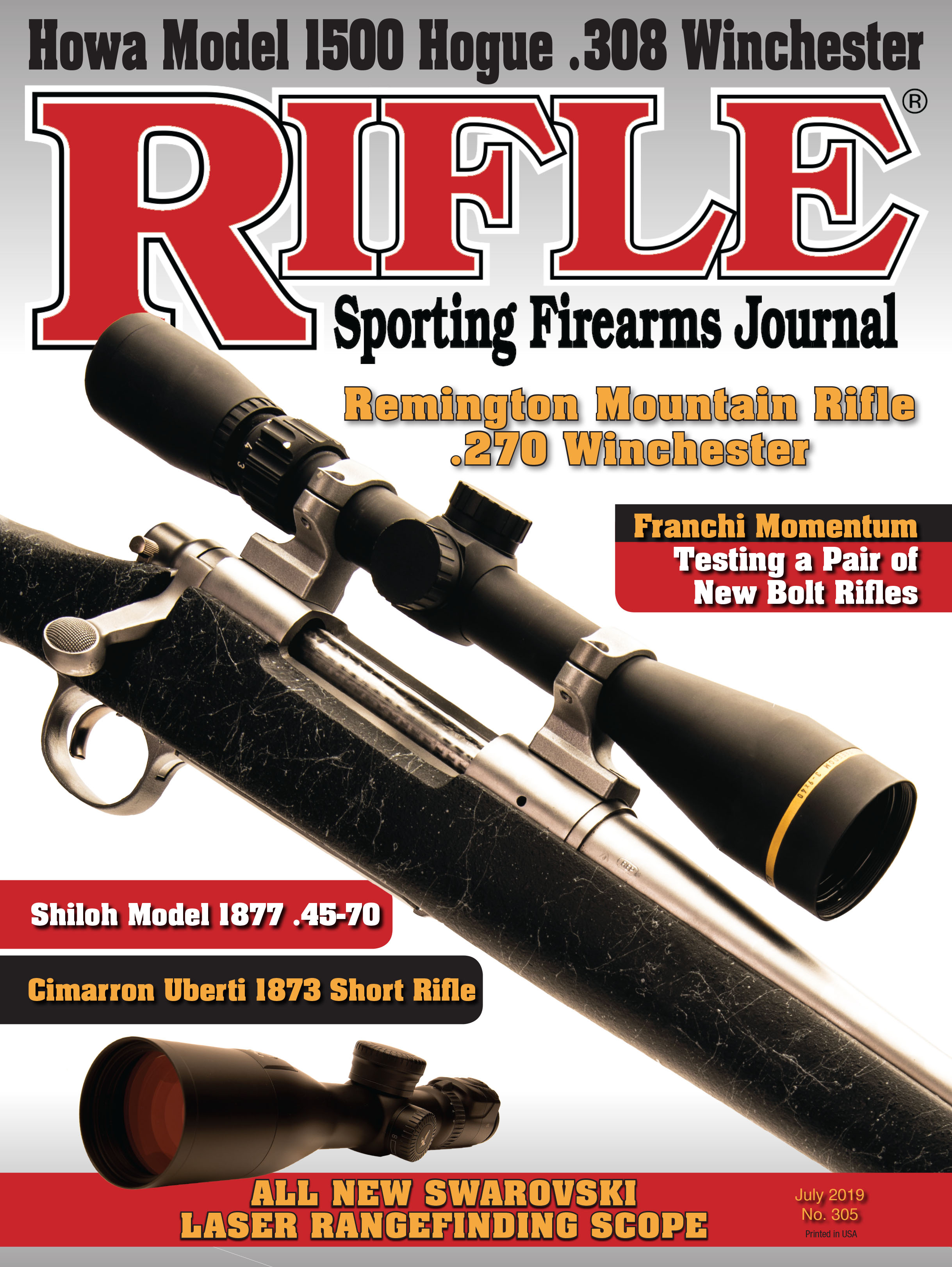Spotting Scope
Target Versus Hunting Cartridges
column By: Dave Scovill | July, 19

While waiting for the obligatory timeframe to pass, it has been interesting to review the more recent cartridge introductions in the gun press (print) and on the Internet, which as folks might be aware, are on two different planets.
Of course, you would have to be chained up in the basement to have escaped the never-ending press coverage of the 6.5 Creedmoor, which is basically a modified .260 Remington, but “better” because it has a scosche (Japanese) longer neck and a tad (English) less powder capacity.
That last is interesting, since the gun press has spent the last 50 years fawning over anything with the case capacity just short of the .50 BMG, as witnessed by the culmination of big beltless and belted wonders that generate the kind of recoil that no rational person would care to put up with. And yes, for the discerning shooter, there are wildcats based on the big .50 for those who like to shoot, as they say, “over the horizon.”
Hornady has also come up with the 6.5 Precision Rifle Cartridge (PRC) that seemed to lay dormant for a bit but has been approved by SAAMI on a shortened .375 Ruger case. Ballistics boil down to 2,950 fps or so, depending on barrel length, with a 147-grain bullet. In effect, it’s a so-called more modern beltless version of a .264 Winchester Magnum that was run out of town nearly 50 years ago. Layne Simpson wrote about the 6.5 Short Action Ultra Mag (SAUM), aka 6.5 GAP 4S, with about 4.0 grains more case capacity than the 6.5 PRC in his column “Wildcat Cartridges,” Handloader No. 318 (February-March 2019).
The long neck on the 6.5 PRC, however, is designed to slow throat erosion. That’s good news for target shooters who might wear a barrel out in less than a year, but for hunting rifles that might be fired five or six times per year or 200 rounds in 20 or more seasons, barrel wear is hardly a concern. Either way, one might argue that the 6.5 PRC is a smart move that avoids butting heads with the .26 Nosler and 6.5-300 Weatherby, which are likely better off by butting heads with each other and/or the 6.5 STW.
At the recent SHOT Show in Las Vegas, Hornady was showing the .300 PRC, also SAAMI approved, based on the full-length .375 Ruger case but with the shoulder moved back at a steeper angle to increase neck length a scosche or a tad, take your pick. When compared to a .30-375 Ruger wildcat, the .300 PRC neck is roughly .045 inch longer for a total of .308 inch, one caliber long assuming you don’t trim cases more than a scosche.
That may also prove interesting since some members of the gun press made a living bad mouthing the .300 Winchester Magnum for its short neck. The best alternative, we were told, was the .30-338 Winchester Magnum, or later the .308 Norma. I can’t wait to hear about how the beltless .300 PRC is better because the one-caliber neck allows the case to hold about one-tenth of a scosche/tad more powder with less barrel erosion than the most popular .30-caliber belted magnum of all time.
Of course, the other damning feature of the .300 Winchester Magnum is that it was designed to headspace on that so-called unreliable belt with factory loads, whereas the .300 PRC and similar large-capacity, beltless cases headspace on the shoulder, which is claimed to aid accuracy.

Handloaders, however, routinely fireform .300 Winchester Magnum cases and any other belted cartridges, like the 7mm Remington Magnum and Weatherby lineup, etc., then use the fireformed brass that is sized to headspace on the shoulder and closely fits the rifle chamber for serious target or hunting loads. Ditto for the PRC, so what’s the point again?
Case capacity of the .300 PRC is about 83 grains of water to the base of the neck, compared to a .300 Winchester (belted) Magnum that holds 81 grains and the .300 Weatherby that holds 88 grains to the base of the neck. (Disclaimer: My filtered well water at 5,500 feet elevation might weigh somewhat differently than your tap water.)
None of the above is to ignore industry talk about the .300 Norma (.588-inch bolt face) that is rumored to be the “new” sniper cartridge, or the base case to be necked up or down for various militaries. We have witnessed similar rumors about 6.5mm, 7mm and other .30 calibers since the invention of the home computer, so stand by.
In review of a few comments on the Internet, however, it seems some folks are consumed with how to build a 7mm target round, mostly because of the superior ballistic coefficients for a variety of 160- to 168-grain match bullets. “Superior” meaning compared to the heavier .30 calibers that produce more recoil and the smaller 6mm or 6.5mm calibers that may not buck environmental factors as well as the slightly heavier (20 to 30 grains) 7mm slugs. So recoil appears to be a major consideration. For the most part, these folks are not talking about benchrest matches but F-Class target rifles, although there appears to be due consideration as hunting cartridges.
Oddly, there seems to be some jabber about dredging up the circa 1963 .284 Winchester as nearly ideal for lobbing bullets out to extended ranges. Some folks, however, still complain about the rebated (.470-inch) rim and question if there is sufficient powder capacity for a short-action rifle.
For a few enthusiasts, the ideal long-range target cartridge would be a rimless .284 Winchester case with a longer neck. That, some say, would require moving the shoulder back a scosche and cause a resultant reduction in powder capacity, not to overlook what would become the oddball, .500-inch bolt head diameter.
Then there is a 7mm Winchester Short Magnum (WSM) with the shoulder pushed back to form a longer neck, which for all practical purposes is a 7mm Short Action Ultra Mag (SAUM). Both, along with the .284, will push a 168-grain match bullet to at least 3,000 fps when seated out to 2.850 inches overall loaded length (OAL) in a short action. Cartridges with a larger case capacity and/or not shorter and fatter than the .284 are rarely mentioned in target shooting circles.
None of the current 6.5 short- action cartridges will push a 140- grain bullet at those speeds. In effect, the 6.5 PRC is close, but it requires a medium or long action to accommodate the 2.755- to 2.955-inch OAL requirements. The .264 Winchester will do it in a .30-06-length action, but it is largely condemned for several cobbled-up reasons nowadays that have nothing to do with normal hunting use.
Not that there is a hard-line requirement to obtain 3,000 fps launch speeds for target rifles, but experienced, extended-range shooters tend to follow the long-held assumption that “minimum time to target” helps to provide flatter trajectory and reduce wind deflection. Folks can only hope that the bullet with the highest sectional density (SD) and ballistic coefficient (BC) is also the most accurate at the range(s) of interest.
One of the most interesting features that rarely, if ever, shows up in discussions of 6.5mm-, 7mm- and .30-caliber target rifles is how trajectory, velocity and energy compare. I’ve seen .30-caliber tables posted with 6.5s to demonstrate the heavier recoil of the former, but 6.5 advocates appear hesitant to list 7mm numbers alongside the 6.5mm. Assuming similar BC and SD, 7mm cartridges shoot beside 6.5mms as far out as anyone might want to push them. Recoil for the 7mm load/bullet is heavier, possibly, depending on the weight of the rifle and the recoil pad. A 7mm PRC would be a beltless version of the 7mm Remington Magnum, or thereabouts, and fairly duplicate the wildcat 7mm Newton from the 1940s and ’50s, sans the scosche longer neck. Hunters might choose to keep their 7mm magnums, and target shooters will do what target shooters do.
None of the above is meant to leave out the .257- and .277-inch hunting-weight bullets, 100 to 120 grains and 130 to 150 grains, respectively, that have somewhat lesser BCs and SDs than some other calibers, but it requires a rather significant change in BC to have a meaningful change in bullet impact as ranges increase. That means the latest and greatest 6.5mm-, 7mm- or .30-caliber target cartridges have nothing on the .257 Roberts, 7mm Mauser, .270 Winchester, etc., or anything based on a short, belted magnum case in pursuit of big game when the unwashed start in about plastic tips, BC and lobbing bullets out to infinite.
Roughly 20 years ago, a book came out that made quite an issue of BC and trajectory in sporting rifles. The author took it upon himself to beat me up in a column in each issue of a now-defunct magazine for a couple of years, owing to a test I conducted with spitzer and roundnose bullets of the same weight at 300 yards in a .257 Roberts, 6.5x55 Swede and 7x57mm Mauser. At the time, all three were available in factory loads with roundnose bullets. All I had to do was match factory velocities with handloads using spitzers of the same weight. My contention was, and still is, groups formed by pointy and roundnose bullets would overlap, assuming the same sight setting, if fired at the same velocities at normal hunting ranges.
What my antagonist also failed to acknowledge was that while roundnose hunting bullets may arrive at any given target with slightly less velocity and energy compared to their pointy counterparts, they generally smack the animal a scosche harder than computers might suggest. Can you spell “.30 WCF, .35 Remington, .45-70, 9.3x62, .30-40, .375 H&H, etc.”? Chances are, the iPhone-age gun press has never fired any of them, or old standards of similar ilk, at big-game animals.
Since it appears that some members of the gun press were likely born after 1962, they are probably unaware that the 7mm Remington Magnum was introduced in that year with a 175-grain roundnose bullet. Those who have to ask “Why?” have likely never been faced with the south end of a northbound elk in the heavy timber country of Idaho, Oregon, Montana, northern Arizona and New Mexico, or just about anywhere else that big stands of Douglas fir and/or Ponderosa pine provide prime habitat for elusive bulls.
The BC for the roundnose bullets in my test were a bit less than .3 and the spitzers averaged around .45 or so, and groups at 300 yards overlapped for three shots with each bullet aimed at the center of an 8-inch bull. None of the 18 shots would have missed a coyote-sized target.
As a follow up, my wife, Roberta, took a trophy-class caribou that now graces our living room with her Ruger M77 6.5x55 Swedish using a 160-grain Hawk roundnose bullet in Canada’s Northwest Territories.
So, by significant, we mean choosing a BC between .35 and .5 in hunting bullets is picking nits, rarely enough to detect with factory sporting rifles at prudent hunting ranges on deer-sized or larger game. It is vitally important, however, to require minimal retained energy that is appropriate for the game at hand and the bullet of choice. All folks have to pay attention to is whether the discussion applies to target or hunting rifles. They are rarely the same.


